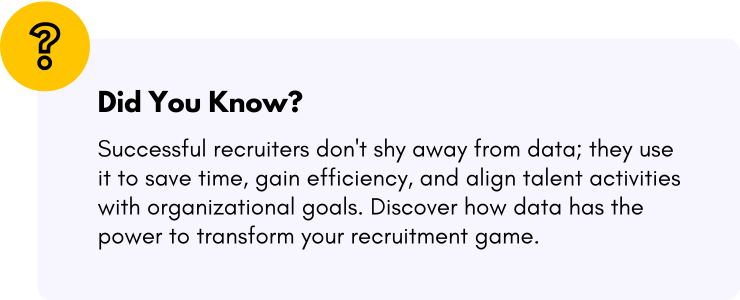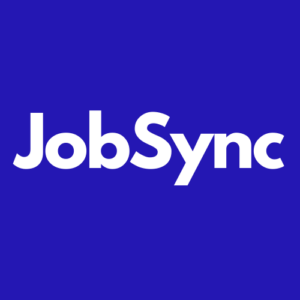

The recruitment process is a treasure trove of data. Mined carefully, it can tell you all sorts of things about the candidates you’re hiring, declining, and losing and shed light on the performance of your recruitment activities.
It’s the difference between making weak decisions based on luck or intuition versus informed decisions backed by concrete evidence.
So, what is holding talent acquisition (TA) teams back from taking a more scientific approach?
What Does Data-Driven Mean In Talent Acquisition?
A data-driven approach is when you use tangible facts to inform your recruiting processes, from how you source to which candidates turn into high performers post-hire.
TA teams that use data are more likely to be efficient, effective, and successful in their hiring efforts, making the optimal allocation of resources to find the best candidates for their organizations. If top performers come from referrals, why spend thousands of dollars on an agency?
“Data” in this context does not just mean cold numbers. Instead, it includes a combination of quantitative and qualitative measures to understand the recruitment landscape. This means looking at both hard data (application rates, time-to-fill, cost-per-hire, turnover rates, etc.) and soft data (candidate experience, employer branding, stakeholder sentiment, how recruiters are perceived, etc.) to get a well-rounded view of what is happening within your organization.
How Can You Capture The Data?
When data can cover many things, it becomes a real challenge to capture it cleanly and consistently. The first step is to evaluate the systems you already have, especially ones meant for data capture, such as your applicant tracking system (ATS), candidate relationship management (CRM), human capital management systems (HCM), onboarding, and payroll systems. Next, identify places where you may have unorganized data, such as email, Excel sheets, and Google Docs, and in key personnel’s heads. This will help you understand what data you already have and how it can be tied together to produce insights. This may be done with third-party data tools or through intentional Excel or Google Sheets exports.
Within your existing systems, look to understand what data is required and at what steps to ensure you capture the data you need at each point in the process. Additionally, it’s essential to make sure there is adherence to a common data model that will allow you to associate common data traits such as the concept of an applicant, lead, job, salary, etc., and a standard primary data key across the data sets such as a candidate ID or email that will allow data connections.
Other kinds of data are equally valuable but far less obvious to collect, source, and utilize. Examples include everything from what your recruiters learn about the competition through candidates to case studies from recruiters on better ways to intake jobs, effective sourcing templates, and the like. Each of these data sets may need a more custom data collection and aggregation approach. Any of these examples are most likely to be shared and captured when the business supports a culture of data sharing.
How Data Can Help Talent Teams
To help you understand how data can empower your talent acquisition teams, we’ve compiled a list of the top benefits.
- Unearth hiring issues.
In most organizations, the people responsible for sourcing, recruiting, hiring, and managing employees operate within their own scope and processes. While they might agree there is a problem, they rarely have a full view of what is happening before, during, and after their own involvement—and you can’t solve a problem with blinders on. Data can help identify the root cause or causes of issues in the hiring process. It helps point to where you may need targeted improvements and provides the baseline and the new outputs for measuring the increased success rates from those improvements.
- Make the business case for process improvements.
Which process steps take longer than they should? Can they be skipped, streamlined, automated? Are there activities that don’t yet have a process but should? Where in the process are conversions falling off? Data helps you see these patterns so you can strategize ways to fix the areas causing the most pain.
- Improve the quality of hire.
There’s a huge difference between an A-player and a C-player in terms of revenue generated, impact on company culture, and overall contribution to the organization. Can you tell these people apart at an interview? Probably not. However, with data, you can see patterns of who the top performers are by characteristics, experience, soft skills, and even lead source, and use that information to make smarter hiring decisions. Data can also tell us if the process is impacting the quality of hire. For example, has urgency bias crept in, and we are selecting the first available? Or is scarcity bias impacting our decision to choose the best options? Neither of these is a great choice.
- Optimize resource allocations.
Data can help you draw a clear line of sight between the money and time you’re investing and the results you’re getting in return. What quantitative ‘misses’ or ‘wins’ result from shifting resources so you can take advantage of marginal gains in the process? Data helps you articulate the financial impact of your spending so you can secure the resources you need as a talent leader.
- Hire faster and better.
While no one metric is more important than another, one thing we don’t talk about enough in TA is the opportunity cost of recruitment. Every day, a position remains unfilled, which translates into lost productivity for the company. When more good hires are made and made faster, the organization becomes more productive and profitable—data is foundational to this process. Data can tell you if hiring managers, recruiter load, media investment, salary provided, or job requirements are the core cause of a slowed hiring process.
- Improve the candidate experience.
While candidate experience has been a hot topic for decades, many organizations still struggle to improve this important part of the hiring process. Frankly, there are 1,001 ways to mess it up. However, by tracking data on candidate interactions, response times, conversions, sentiment, and overall satisfaction, you can pinpoint what’s increasing or decreasing the likelihood of a candidate responding favorably to your brand.

- Make accurate forecasts.
How many candidates do you need to make one hire? How do your activities today align with tomorrow’s workforce needs? To make sound decisions about talent, we need to know your current situation and predict how that will play out in the future. For example, metrics such as employee turnover, promotions, internal department moves, and new business expansion—often far outside the purview of TA—can provide the holistic insights you need to build the right talent pipelines, avoiding costly delays or scrambling to fill positions.
- Elevate TA from service to strategy.
The general feeling in many organizations is that ‘people functions’ like TA and HR are at the lower end of the value chain. This is backward since people are integral to the business’s success, but it’s a stigma that TA teams are fighting against. Wouldn’t it be great if you could provide credible evidence about your activities and their impact on the bottom line? Data speaks the language of finance, and that helps build trust in the talent function.
Why Do Recruiters Shy Away From Data?
Despite the impressive benefits of data-driven recruiting, talent professionals will openly admit that they’re a long way off from reaping the benefits of using data to drive decisions.
Part of the reason is tradition. Historically, talent and recruiting have been run by people-persons who are just not data-driven. They agree that data is valuable, but there’s a feeling that it should never replace that instinct of “I think this person is a good fit for us.” Sadly, that attitude pushes talent teams into a position where they are not acting as strategically as they could. It boxes teams into a corner where other functions call the shots and force the wrong processes and tools on them.
The second, bigger reason is TA’s experience with data. In most organizations, data is siloed in applicant tracking systems, recruitment marketing platforms, human resources information systems, a dozen spreadsheets, and the desks of the VP of Talent, the CHRO, and the CFO. It takes time to collect and organize all this information—time that recruiters and hiring managers simply do not have.
Also, there’s a misconception that data’s usefulness to TA teams stops at the point of hire. Information on hired employees is kept in other systems. Without a complete picture at their fingertips, recruiting teams can’t see who leaves, who stays, who rises through the ranks, and so on. They’re working in the dark to deliver the right number of the right hires at the right time for the right cost, and what’s more, they’re not even aware of it.
Bottom line? The reasons why you’re not using data are the reasons you need to use it.
In our next post, we’ll walk you through the practical steps for gathering your data, leveling up its quality, and using it to make strategic process improvements. This will enable you to hire better and faster and get ahead of business demand. All you have to do is jump right in and start experimenting!

